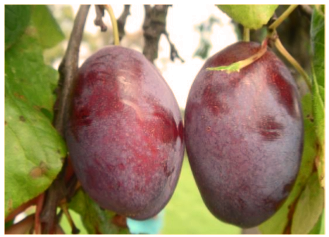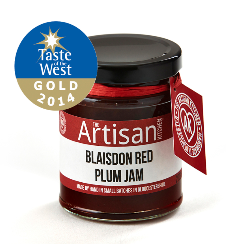

41. Blaisdon Red - Plum

Season : Harvest in August -
Pollination : Self Fertile
Rootstock : Pixy (although this tree is a ‘true plum’ and would grow well to a large tree without grafting)
Notes :

A heritage variety traditionally loved for its rich claret-

The fruit are medium sized, long oval to egg-
It has a high pectin content, and the perfect acidity for jam making.
If left to ripen fully on the tree, it is also a good eating plum, with a strong, sweet tangy quality.
Once used extensively for jam making in Blaisdon, Glos, it was also used to make wine and a liquer. It has since lost out in popularity to larger varieties -
Prunus domestica ‘Blaisdon Red’
The Blaison Red Plum was ‘discovered’ in a hedge by John Dowding in the later 19th century, first recorded in 1892, in the village of Blaisdon, Forest of Dean, Gloucestershire.
100 years ago Blaisdon orchards were plentiful, with growers supplying Sullivans jam factory in Guiting Power. Many Forest of Dean colliers used to spend their holidays picking the crop.The factory eventually closed and the Blaisdons declined in popularity
It is said that Blaisdons were found in the Antarctic huts of the ill-
What is left of the old Blaisdon orchards are considered important for the regional biodiversity, and are associated with the rare Noble Chafer Beetle.